
03-12-2022 00:10
Przemyslaw DrzewieckiMochle, Poland - 18.10.2022; Several ascomata on

01-12-2022 12:53
Patrice TANCHAUDBonjour, récolte réalisée sur un pin brûlé,

01-12-2022 23:50
Przemyslaw Drzewiecki30.11.2022; Mochle near Bydgoszcz, Poland. Old hor

01-12-2022 14:13
 Lothar Krieglsteiner
Lothar Krieglsteiner
... on decorticated wood of Picea, near Snasa, Ber

01-12-2022 11:49
 Lothar Krieglsteiner
Lothar Krieglsteiner
when finding this on 8.7.2022 in the margin of Nat

01-12-2022 14:29
 Lothar Krieglsteiner
Lothar Krieglsteiner
Norway, near Snasa, 9.7.2022, on Juncus effusus. T

01-12-2022 13:09
 Lothar Krieglsteiner
Lothar Krieglsteiner
on 4.7.22, in the marginal area of National Park S

01-12-2022 11:05
 Lothar Krieglsteiner
Lothar Krieglsteiner
collected 8.7.22 on margin of National Park of Bja
I found this Xenonectriella/Pronectria like fungi grwing on Phaeophyscia orbicularis. I think it is Xenonectriella leptaleae (synonym for Pronectria leptaleae). Update: it is now called Xenonectriella physciacearum
The ascomata protrude from the thallus of the host and are appox. 250 um in diameter. young spores are transparent and smooth, 2 celled, broadly ellipsoid, slightly constricted at the septum. Mature spores are light orange/brown and have a tuberculate surface, measuring 12.5 - 14.6 x 7.3 - 9.1 um (n=9). All microscope photos are in K.
Can anyone confirm this is Xenonectriella physciacearum ?
Kind regards,
Niek Schrier
Now called Xenonectriella physciacearum, see attached piece.
Alain
I couldnot download that paper and therefore didnot know it had a new name. I updated the name in the topic and text. It looks like it is Xenonectriella physciacearum as far as I can see for now. We did observed a violet K+ reaction btw.
Regards,
Niek

Best Franz
Kind regards,
Niek


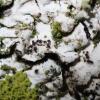
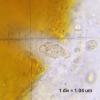
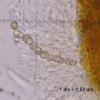
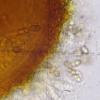
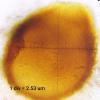
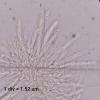
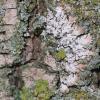
 Pronectria-amp-Xenonectriella-sur-Physciaceae-Herzogia33--0001.pdf
Pronectria-amp-Xenonectriella-sur-Physciaceae-Herzogia33--0001.pdf